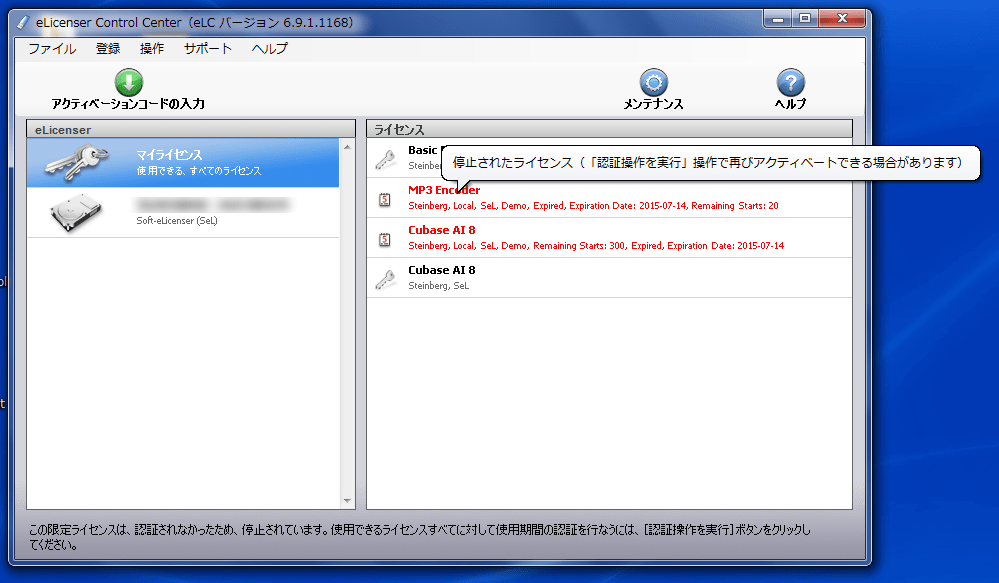

There is even better tech for encoding now that is NOT MP3, but MP3 will probably live on forever since it's strong enough and available on almost all players these days. MP3 is settled science at this point, and little use for anybody to find something better than LAME.
CUBASE MP3 ENCODER LICENSE SOFTWARE
(Other software does the same thing, so you can cross-check it if you don't believe that software.) Since MP3 encoding is no longer licensed, almost everybody is now using LAME.ĭownload MediaInfo yourself and test if you care.
CUBASE MP3 ENCODER LICENSE FREE
(It's been free in S1 Artist for years now.)

When this thread was created 8 years ago, PreSonus used the official, licensed encoder from Fraunhofer, and there was a licensing fee, and a slight quality upgrade, so they had MP3 as a "paid for" option in Studio One Artist ($9.99 if I remember).

When MP3 is written, it writes a tag about the encoder too. When the encoder patents expired (4-6 years ago?) then PreSonus switched to LAME. At that point, S1 Artist users needed to pay $10 each, and I had to justify that to my clients. I did tons of research when this post started 8 years ago. Therefore, comparison of decoders is usually based on how computationally efficient they are (i.e., how much memory or CPU time they use in the decoding process). Most decoders are "bitstream compliant", which means that the decompressed output that they produce from a given MP3 file will be the same, within a specified degree of rounding tolerance, as the output specified mathematically in the ISO/IEC high standard document (ISO/IEC 11172-3). (See psychoacoustics.)ĭecoding, on the other hand, is carefully defined in the standard. This is done to limit the temporal spread of quantization noise accompanying the transient. If there is a transient, 192 samples are taken instead of 576. An encoder that is proficient at encoding at higher bit rates (such as LAME) is not necessarily as good at lower bit rates.ĭuring encoding, 576 time-domain samples are taken and are transformed to 576 frequency-domain samples. Comparisons are widely available, so it is easy for a prospective user of an encoder to research the best choice. As a result, there are many different MP3 encoders available, each producing files of differing quality. Implementers of the standard were supposed to devise their own algorithms suitable for removing parts of the information from the audio input. At present, these suggested implementations are quite dated. The MPEG-1 standard does not include a precise specification for an MP3 encoder, but does provide example psychoacoustic models, rate loop, and the like in the non-normative part of the original standard. OR if over the years the MP3 encoders have converged to the point where there is little functional difference for 192 CBR encodings. If I'm reading it right, there can be encoder differences so I'm wondering how the PreSonus encoder compares with some others. It implies there can be differences in encoding and says " Comparisons are widely available." but I haven't been able to find any. I just want to be sure I know rather than make assumptions.Īs a follow up to the OP, here's what I found on Wikipedia:
CUBASE MP3 ENCODER LICENSE CODE
You could be right that S1 is using the same encoder as Audacity at a low level, or they may be based on different code bases and one is stronger than the other. I'm not exactly a signal processing expert so I'm looking for some references. I could be wrong, and maybe the MP3s have been around so long they have converged to a point where they are functionally equivalent or a spec has been formalized. It's not straight digital conversion where I would expect the same input to always provide the same output. I would expect there to be a range of qualities in MP3 type compression schemes as the output audio doesn't match the input file. Someone is making decisions about what stays and what goes. To reduce file size by 90% or so, the software has to decide what can be thrown out and still stay someone close to the original intent. Maybe I'm missing something.ĭo you have any sources that document that they are all the same? (MP3 encoders specifically.)Īudio lossy compression is based on psychoacoustics, and that is mostly science with some art. I understand a reasonable amount about digital audio, but I believe theoretically there can be a significant difference when encoding includes lossy compression. As long as the files are being decoded at the same frequency and bit rate there, theoretically, cannot be a difference. Cristofe wroteEncoders are encoders.we are talking digital audio.


 0 kommentar(er)
0 kommentar(er)
